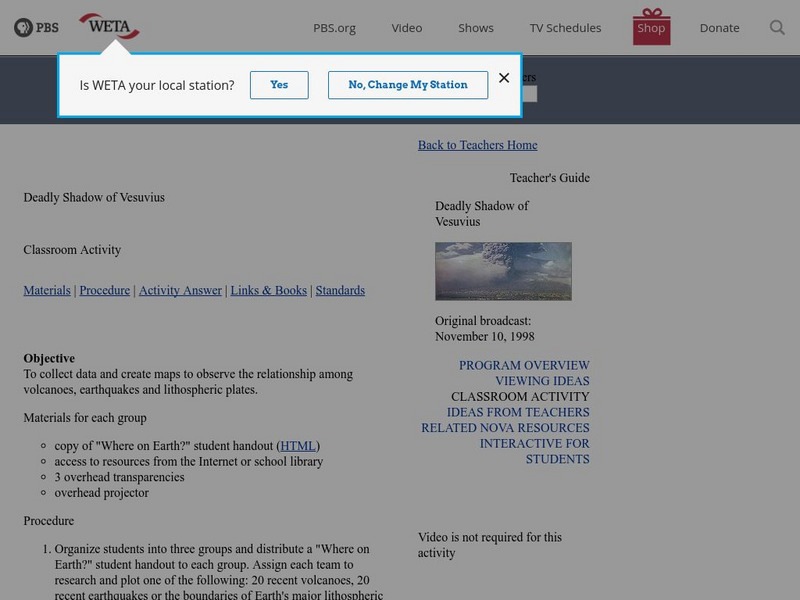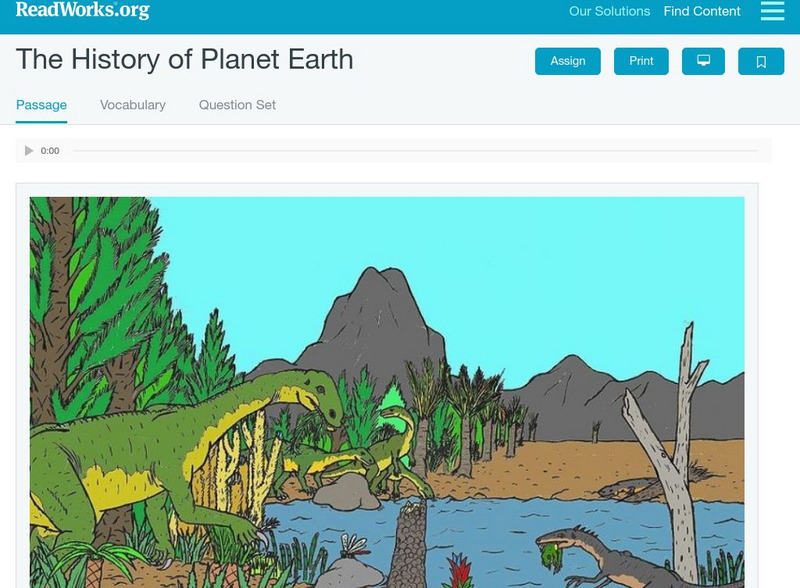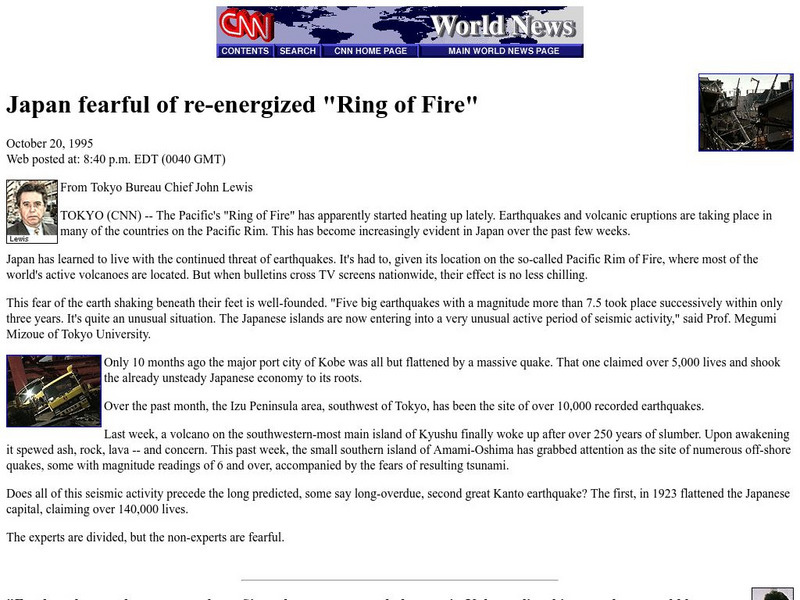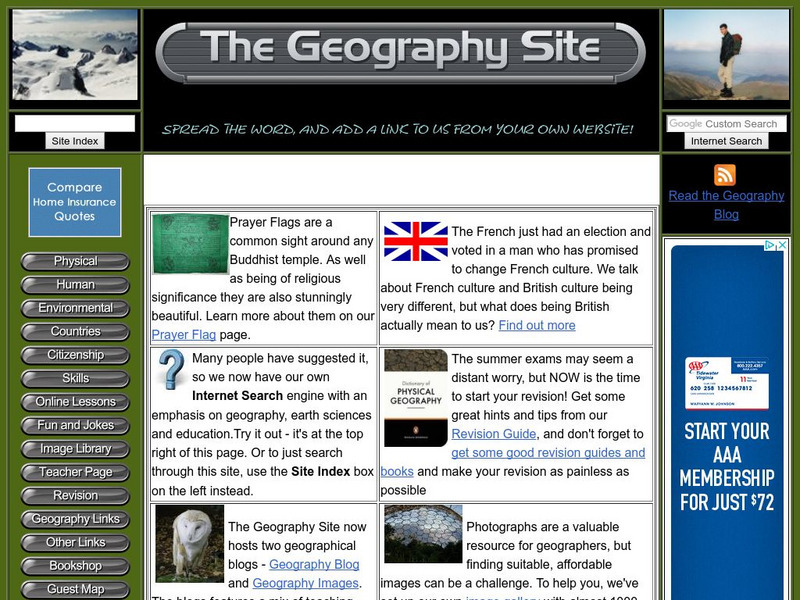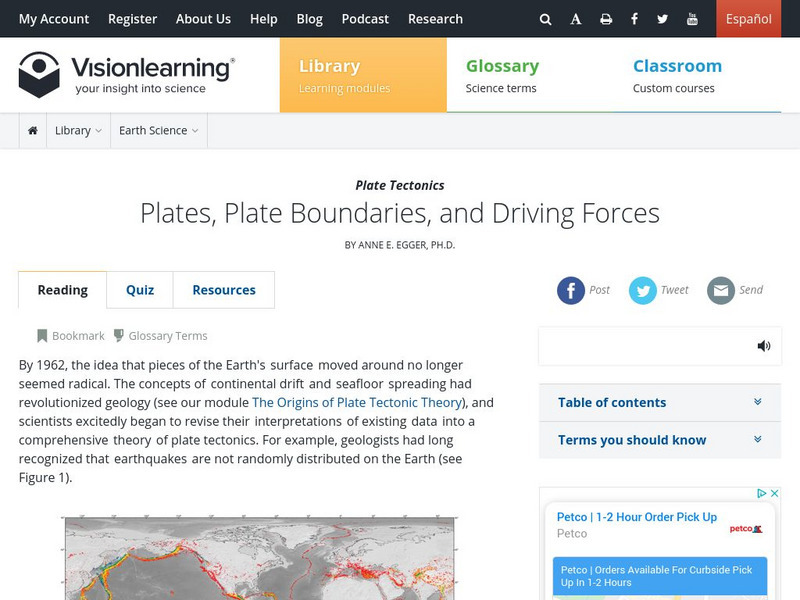TeachEngineering
Teach Engineering: Naturally Disastrous
Students are introduced to natural disasters, and learn the difference between natural hazards and natural disasters. They discover the many types of natural hazards - avalanche, earthquake, flood, forest fire, hurricane, landslide,...
NOAA
Noaa: Environmental Technology Lab: Infrasonics Program
This resource focuses on research of infrasonic sounds found in the environment. It discusses such infrasonic sources as volcanoes, avalanches, severe thunderstorms, and earthquakes.
PBS
Pbs Teachers: Deadly Shadow of Vesuvius
Observe the relationship among volcanoes, earthquakes and lithospheric plates by collecting data and creating maps. This activity was created to be used with the NOVA program, "Deadly Shadow of Vesuvius" but the video is not necessary...
American Geosciences Institute
American Geosciences Institute: Earth Science Week: Mapping Quake Risk
Learners use GIS to observe worldwide patterns of earthquakes and volcanoes and analyze the relationships of those patterns to tectonic plate boundaries. Then they identify cities at risk.
Incorporated Research Institutions for Seismology
Iris: Basin Range Tectonics
This interactive map of the Basin and Range Province reveals earthquakes, faults, hazards, volcanoes, mines, and National Parks.
Weather Wiz Kids
Weather Wiz Kids: Weather Safety
Click on the links to find guides to weather and natural disaster safety tips for earthquakes, floods, heat waves, hurricanes, lightning, mudslides, avalanches, thunderstorms, tornadoes, tsunamis, volcanoes, wildfires, and winter storms.
NASA
Nasa: Our Restless Planet
This animation library is a great resource for a diverse list of earth science topics including: tsunamis, land subsidence, magnetic fields, volcanoes earthquakes, floods, and sea level changes.
US Geological Survey
U.s. Geological Survey: Search
The U.S. Geological Survey offers information for teachers and students interested on Earth Science research. Contains references to general information as well as current research and events.
American Association of Physics Teachers
Com Padre Digital Library: Physics to Go: Explore Physics on Your Own
Contains a full physics curriculum with links to games, webcasts, and activities. By creating a free account, students and teachers can create their own personal collection of resources.
Read Works
Read Works: The History of Planet Earth
[Free Registration/Login Required] This informational text passage shares information about the history of the earth and its landforms. This passage is a stand-alone curricular piece that reinforces essential reading skills and...
CommonLit
Common Lit: Plate Tectonics: Moving and Shaking
A learning module that begins with "Plate Tectonics: Moving and Shaking," accompanied by guided reading questions, assessment questions, and discussion questions. The text can be printed as a PDF or assigned online through free teacher...
PBS
Nova: Seismic Signals
Scientists have determined that the earthquakes preceding volcanic eruptions are different than those that precede earthquakes. Discover the sounds and wave patterns produced by the three different types of volcanic seismic activities.
Wikimedia
Wikipedia: Pacific Ring of Fire
Wikipedia offers information on the location of the Pacific Ring of Fire, an area of frequent earthquakes and volcanic eruptions. Map included.
ClassFlow
Class Flow: Earth Layers
[Free Registration/Login Required] In this lesson students will recognize that changes that occur in the layers of the Earth (volcanoes and earthquakes) are a result of forces acting upon it.
Soft Schools
Soft Schools: Plate Tectonics Quiz
The internal and external processes of Earth are related through the movement of Earth's plates, called Plate Tectonics. Find out how much you know about Plate Tectonics by taking this quiz.
CNN
Cnn: Japan Fearful of Re Energized "Ring of Fire"
Article describing Japan's reactions to the Ring of Fire heating up again. 10/1995
Other
University of Delaware: Plate Tectonics
This site is a very simple overview of plate tectonics. It includes a map of all the major plates and a diagram of the layers of the earth.
Other
The Geography Site
The Geography Site offers many links for your geography research. Links offered are to physical geography, human geography, environment, online lessons, and much more.
ClassFlow
Class Flow: Plate Tectonics
[Free Registration/Login Required] Students will investigate the scientific view of how the earth's surface is formed. Students recognize that lithospheric plates constantly move and cause major geological events on earth's surface....
Ready
Ready
Explore the Ready website for an overview of how families and businesses can prepare for emergencies, threats, and disasters by building kits, making plans, and staying informed. Find safety information about biological threats,...
Incorporated Research Institutions for Seismology
Iris: Gps Measuring Plate Motion [Pdf]
This resource looks at how geologists are able to measure the movement of tectonic plates using satellite-based data and how they were able to surmise in the past that the plates were moving. It also discusses how to read GPS time-series...
Vision Learning
Visionlearning: Earth Science: Plate Tectonics Ii: Plate Boundaries and Forces
Instructional module focusing on plate tectonics. Discussion includes plates, plate boundaries, and driving forces. Site also includes an interactive practice quiz and links relating to the topic.
Utah State Office of Education
Utah Science: Change Is My Game
Discover the ways in which the Earth's surface is always changing and what causes those changes through reference materials and a collection of activities.
Science Education Resource Center at Carleton College
Serc: Plate Kinematics
For this activity, young scholars will observe and understand the basic kinematics of plate movement, how oceans are formed during continental rifting, and the relationship between plate geometry and tectonic data such as earthquakes,...




